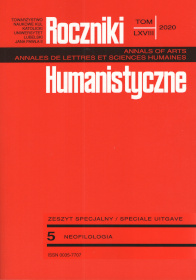Freedom of Religion in Transylvania in Early Modern Times
Abstract
After the victory of the Ottomans in Mohács, a long war started for the Hungarian throne which led to the division of Hungary into three parts. János Zsigmond, the son of the king of Hungary and Isabella of Poland became the prince of the Principality of Transylvania, being also a vassal of Sultan Suleiman II. There were three nations in the Principality (Hungarians, Szeklers, Saxons). They formed ethnic groups and estates. In the 16th century some of them converted to protestant religions, some of them remained catholic. Religious questions were discussed on the Diet ruled by the humanist prince János Zsigmond. In this paper I give an overview of the different bills which ensured the status quo among the different protestant religions and the Catholics.
References
Ács, Pál. “Bécsi és magyar renegátok mint szultáni tolmácsok: Mahmud és Murád [Weense en Hongaarse renegaten en tolken van de sultan: Mahmoed en Murad]”. Tanulmányok Szakály Ferenc emlékére [Studies ter nagedachtenis van Ferenc Szakály], ed. Fodor Pál, Géza Pálffy, István György Tóth, Budapest, MTA TKI Gazdaság- és Társadalomtörténeti Kutatócsoport, 2002, pp. 15-28.
Balázs, Mihály. “‘A hit… vallásból lészön’. Megjegyzések a négy bevett vallás intézményesüléséhez a 16. századi Erdélyben [‘Het geloof… ontstaat door religie.’ Opmerkingen over de institutionalisering van de vier gerecipieerde religies in de 16de eeuw in Zevenburgen]. Tanulmányok Szakály Ferenc emlékére [Studies ter nagedachtenis van Ferenc Szakály], ed. Fodor Pál, Géza Pálffy, István GyörgyTóth, Budapest, MTA TKI Gazdaság- és Társadalomtörténeti Kutatócsoport, 2002, pp. 51-73.
Barányi, Attila. “Magyarország és a külső segítség 1526-ban [Hongarije en hulp van buitenaf in 1526]”. “Nekünk mégis Mohács kell…”, II. Lajos király rejtélyes halála és különböző temetései [Maar we willen toch Mohács…” De mysterieuze dood en verschillende begravingen van koning Lajos II], ed. Gábor Farkas, Zsolt Szebelédi, Bernadett Varga, Magyar Tudományos Akadémia Bölcsészettudományi Kutatóközpont Széchényi Könyvtár, 2016, pp. 35-54.
Kálmán, Benda. “Az 1568. évi tordai országgyűlés és az erdélyi vallásszabadság [De landdag van Torda in 1568 en de geloofsvrijheid van Zevenburgen]”. Fejedelemasszonyok és vallásszabadság Erdélyben [Vorstinnen en geloofsvrijheid in Zevenburgen], ed. Erzsébet Udvarhelyi, Veszprém, Károly Nagy, 2016, pp. 63-66.
Pálffy, Géza. A Magyar Királyság és a Habsburg Monarchia a 16. században [Het Hongaarse Koninkrijk en de Habsburgse Monarchie in de 16e eeuw]. História Könyvtar, 2010.
Péter, Katalin. “Die Reformation in Ungarn”. Études historiques hongroises 4. European Intellectual Trends and Hungary, ed. Ferenc Glatz, Budapest, MTA Történettudományi Intézet, 1990, pp. 39-52.
Ronin, Vladimir. Geschiedenis van Hongarije: van Árpád tot Árpád Göncz. Antwerpen/Apeldoorn, Garant, 2003.
Rumy, Károly György, editor. Monumenta Hungarica. Az az magyar emlékezetes írások [Gedenkwaardige Hongaarse schriften]. Pest, Trattner, 1816.
Várkonyi, Ágnes R. “Pro quiete regni – Az ország nyugalmáért [Voor de rust van het land]”. Korunk, nr 6, 1993, pp. 103-109.
Völkl, Ekkehard. “Möglichkeiten und Grenzen der konfessionellen Toleranz dargestellt am Beispiel Siebenbürgens im 16. Jahrhundert”. Ungarn-Jahrbuch, vol. 4, 1972, pp. 46-60.
Copyright (c) 2020 Roczniki Humanistyczne

This work is licensed under a Creative Commons Attribution-NonCommercial-NoDerivatives 4.0 International License.





